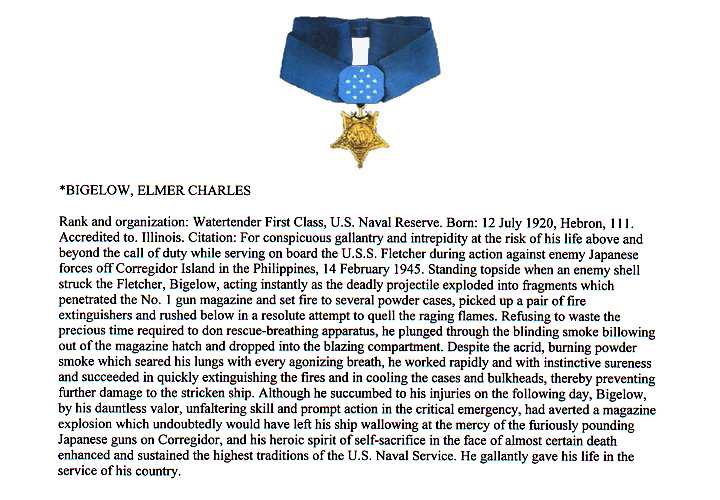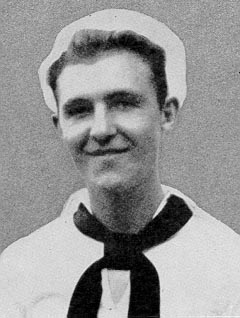BIGELOW-ELMER
ELMER CHARLES BIGELOW

WT1


In the summer of 1943, bowing to the realities of inter-service rivalry, the Joint Chiefs of Staff agreed to a two-pronged advance against the Japanese. The Navy, under Admiral Chester Nimitz, would strike at Japan through the central Pacific. By working "up the ladder" of the Gilbert, Marshall, Mariana, and Bonin Islands, the Navy's leaders believed they could force the Japanese fleet into battle and destroy it. With its fleet destroyed and cut off from outside sources of raw materials, Japan would be forced to surrender. The Army, under the leadership of General Douglas MacArthur, advocated moving up the "New Guinea-Mindanao Axis" into the Philippines. He envisioned using the Philippines as a staging area for the invasion of Japan and, perhaps even more importantly to MacArthur, he wanted to redeem his pledge to the Philippine people.
In June 1942, Allied forces under MacArthur began to leapfrom up the Solomon Islands and along the coast of New Guinea toward the Philippines. Using this tactic, MacArthur's forces landed on Leyte Island in the Philippines on October 20, and they had moved on to Luzon Island in January 1945. By early February, they had recaptured Clark Field and had almost wrested control of Manila from the Japanese, but Corregidor, the key to Manila Bay, was still under Japanese control. The Japanese had 5,000 troops on the island and, as long as they remained there, ships could not enter Manila Bay. So MacArthur decided to take the island.
USS Fletcher (DD-445) was part of Destroyer Division 46, which was assigned the mission of protecting the minesweepers clearing the approaches to Manila Bay and conducting the preliminary bombardment of Corregidor on February 14, 1945. Although the destroyer's gunfire drew little counter-battery fire at first, the Japanese guns began to respond around noon. A Japanese battery near Los Cochinos Point bracketed Fletcher and hit her with an armor-piercing projectile that knocked out Gun Mount 1, killed eight men, and wounded three others. More importantly, part of the projectile penetrated the forward magazine and ignited a fire that threatened to blow up the ship.
WT1 Bigelow, who was standing topside when the enemy shell struck, reacted quickly. Realizing the danger to the ship, he grabbed a pair of fire extinguishers and plunged into the burning magazine. Although he knew the risk he was taking, he chose not to take the time to don a rescue breathing apparatus because he feared the delay would doom the ship. Despite the burning powder smoke that seared his lungs, Bigelow was able to put out the fire and cool the powder cases and bulkheads, thus preventing further damage to teh ship. Because of his quick action, Fletcher was able to remain on station and provide gunfire support for the assault force until she was relieved on February 17, 1945. Bigelow was not so fortunate. He severely damaged his lungs by entering the space without a rescue breathing apparatus and succumbed to his injuries that evening in his sleep. Six months later he was posthumously awarded the Medal of Honor.
- taken from Honor, Courage and Commitment: United States Naval Reserve Medal of Honor Recipients, Naval Historical Center

